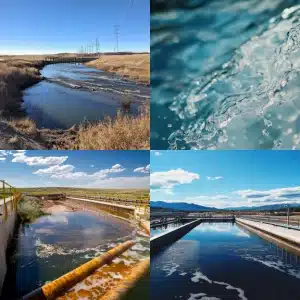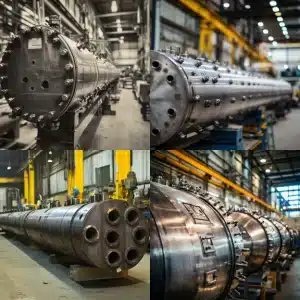
What are the criteria for a pressure vessel?
Pressure vessels are containers designed to hold gases or liquids at a pressure substantially different from ambient pressure. The design, manufacturing, and operation of pressure vessels are governed by design codes and standards to ensure safety. The criteria for a pressure vessel can vary based on the specific standard or code being followed, but most of them share common elements.
Here are some general criteria for the design and operation of pressure vessels:
Material Selection:
The material used must be suitable for the intended service conditions, such as temperature, pressure, and the type of fluid stored.
Material properties, such as tensile strength, yield strength, ductility, and toughness, must be known, preferably from standard tests.
Design Pressure and Temperature:
The vessel should be designed for the maximum expected operating pressure and temperature.
A safety margin is typically added to these values to account for unforeseen or transient conditions.
Wall Thickness:
The minimum wall thickness must be calculated to ensure the vessel can safely contain the design pressure.
Corrosion and erosion allowances are often added to the calculated wall thickness to ensure a longer service life.
Stress Analysis:
The vessel’s design must consider primary stresses (from pressure and weight) and secondary stresses (from temperature differentials, dynamic loads, etc.).
The calculated stresses must not exceed allowable stress values for the material at the design temperature.
Welding:
Welding procedures and welders should be qualified.
Weld joints should be properly designed and inspected, often using non-destructive testing (NDT) methods like radiography or ultrasonics.
Openings and Reinforcements:
Any penetrations or openings in the vessel, such as nozzles or manways, must be properly reinforced to ensure structural integrity.
The area around openings might need compensation to account for material removed.
Design for External Loads:
Vessels should be designed to handle external loads, such as wind or seismic forces, especially if they are located in earthquake-prone or high-wind regions.
Safety Devices:
Pressure relief devices, like safety valves, should be installed to prevent overpressurization.
These devices must be sized properly to handle possible overpressure scenarios.
Inspection and Testing:
After manufacturing, pressure vessels should undergo hydrostatic testing to ensure they can safely handle the design pressure.
Regular inspections, both external and internal, are typically required during the vessel’s operational life.
Documentation:
Detailed design calculations, drawings, material test reports, inspection reports, and other relevant documentation should be maintained for verification and future reference.
Fabrication:
The manufacturing process should follow specific procedures, and skilled labor is essential, especially for tasks like welding.
Operational Limits:
Operators should be aware of the vessel’s design limits and ensure they don’t exceed pressure, temperature, or other operational boundaries.
Many internationally recognized standards govern the design and fabrication of pressure vessels, such as the ASME Boiler and Pressure Vessel Code (BPVC) in the United States. Depending on the region and specific application, other standards like PED (Pressure Equipment Directive) in Europe or various national standards may also be relevant. Adherence to these standards ensures that pressure vessels are designed, fabricated, and operated with a primary focus on safety.




